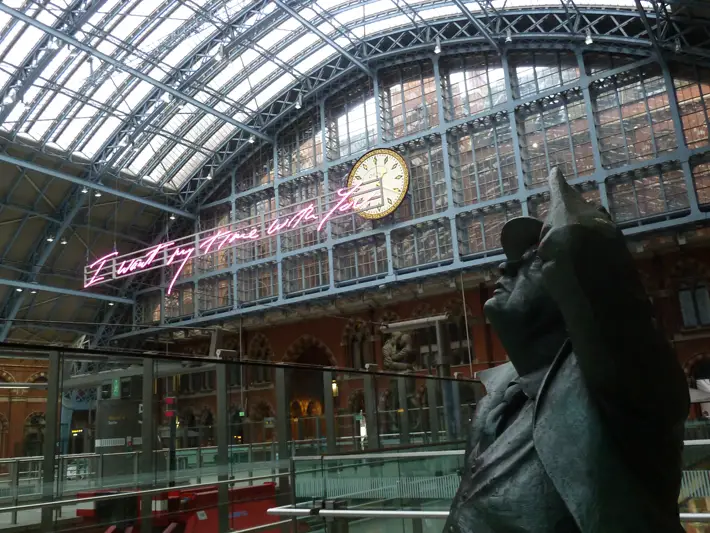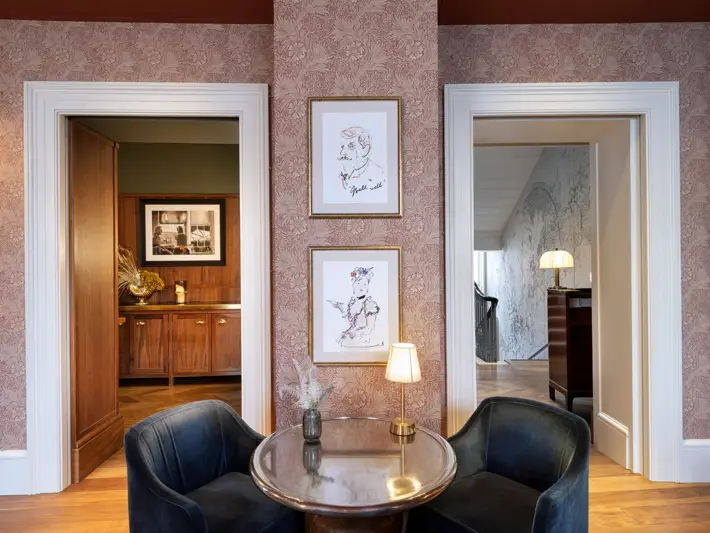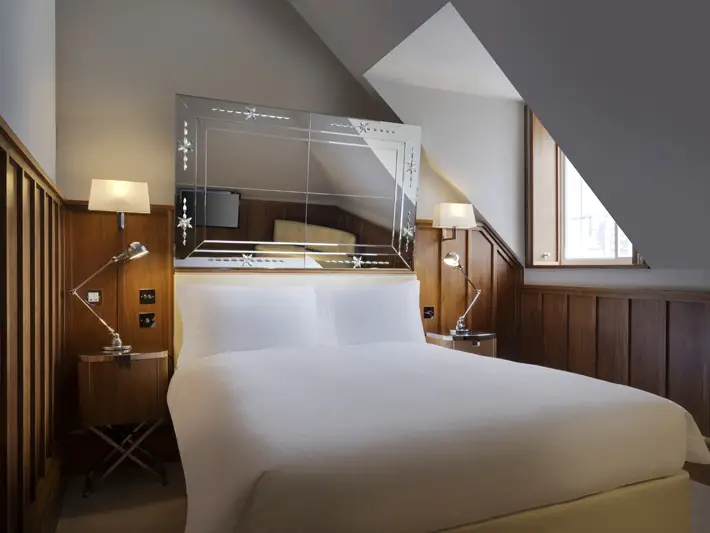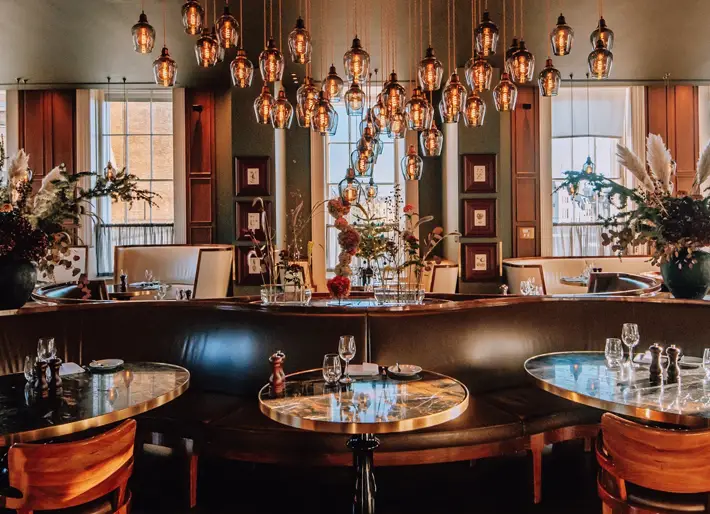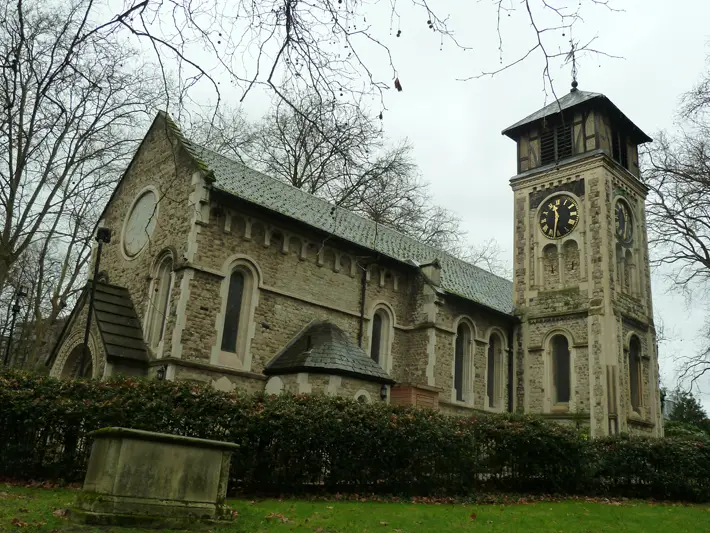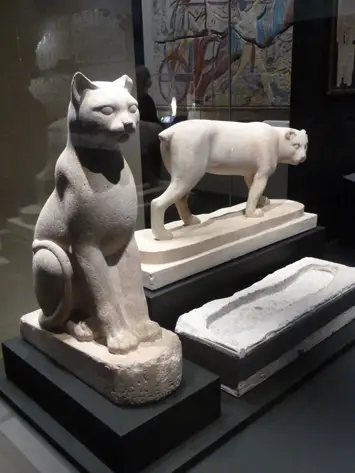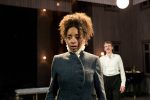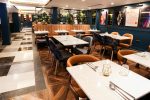Great Northern Hotel, King’s Cross, London & Area – Review
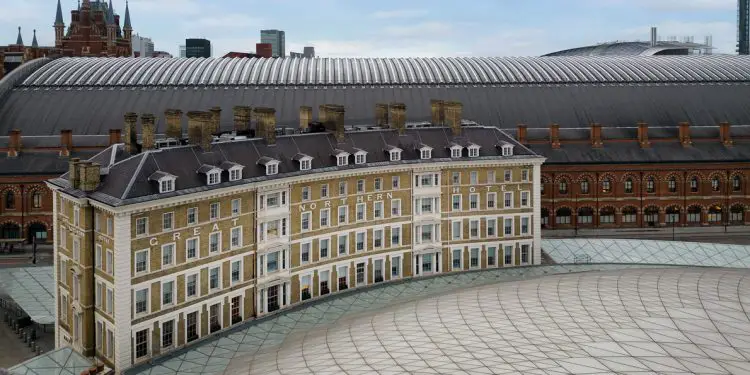
By Clare Jenkins, January 2023
The railway artist Terence Cuneo would have loved the view from our window at the Great Northern Hotel adjoining King’s Cross Station. The man whose paintings of station life at Paddington, Waterloo and York in the 1940s and 50s showed them in all their hustle and bustle – uniformed soldiers back home on leave during the Second World War, nuns scurrying towards Westminster Cathedral, a dog barking at then Prime Minister Harold Wilson – would have been gripped by the sights from Room 325. Commuters checking their watches as they race away from the Letchworth Garden City train to A Very Important Meeting. American tourists pulling their suitcases across the concourse towards the 09.00 to Edinburgh. Market stallholders rearranging their sourdough pastries and cured meats. Keen Harry Potter fans heading for Platform 9¾. Later, the reverse run as passengers hurry home to the suburbs from meetings and conferences in Leeds or York. Then, in the middle of the night, the view is of night-workers, night-owls and street-cleaners. Yet, although the crowds and the traffic surge past, the hotel itself – one of the UK’s first station hotels – is an oasis of quiet.
So yes, the mid-Victorian, Grade II-listed GNH is ideal for people-watching. It’s also ideal as a base for exploring the whole King’s Cross, St Pancras and Camden area. Why stray further when you’ve got the British Museum, British Library, Regent’s Canal, two St Pancras churches, Sadler’s Wells Theatre, Virginia Woolf’s Bloomsbury and a host of specialist smaller museums within a couple of square miles? Not to mention the independent cafes, bookshops, pubs and restaurants of Granary Square and Coal Drops Yard. And, if you must, Eurostar to Paris and Brussels just across the road at St Pancras International.
“A warren of arches”
So, first things first. With just over 24 hours at our disposal, we leave the Sheffield train at St Pancras, head past the statues of John Betjeman and Paul Day’s embracing lovers, and past the Booking Office 1869 restaurant (gorgeous in its golden glow) where, before the station’s extensive restoration, we used to phone home or run for taxis.
We’re heading for the Great Northern, the handsome hotel with curving frontage and Italianate design which we’ve passed countless times over the years. The same honey colour as King’s Cross Station, it blends in almost too well with its surroundings, apart from the signs advertising its RAILS restaurant, and the tables and chairs on the open-air terrace for hardy bar-drinkers and -diners.
The hotel entrance is small, the reception lobby darkly chic but rather cramped, the staff universally helpful and friendly. Elsewhere, it’s a warren of arches, curved corridors (wide enough to take two crinoline-clad Victorian women walking side by side), graceful staircases, the odd bit of stained glass, much striking modern artwork and compact bedrooms. Designed by Lewis Cubbitt (who also designed the station) and built in 1854 for ‘patrons of the Great Northern Railway Company’, nowadays it’s very popular with Americans, hence the huge bed dominating our room. “What’s the weather like on your side?” my husband asked later.
After nearly 150 years, the hotel closed in 2002 but reopened a decade later after a £42 million renovation. Now part of the Tribute Portfolio group, its original 100 bedrooms have been reduced to 88 and divided into ‘Couchette’ (think sleeper compartment), tucked-away-in-the-eaves ‘Edwardian’, and the slightly larger ‘Heritage’ and ‘Victorian’ rooms. “Where classic meets boutique,” as the hotel puts it.
“Communal pantry”
Some rooms look across to George Gilbert Scott’s magnificent St Pancras Station, others have views of the glass canopy of King’s Cross Station – and all make clever use of large decorated mirrors. Ours was a ‘Victorian’ room, all soft olive and dove grey understated elegance, with light walnut furniture, heavy full-length curtains and that massive Hypnos bed. A pale green leather banquette curved round a small table and glass-panelled doors hid the closet/mini-bar and the bathroom, with its freestanding bath and shower attachment (not perhaps the best for anyone with mobility problems). The water took a good five to ten minutes to run warm, despite the efforts of the maintenance man.
There was a Nespresso coffee-making machine in the room but no tea-making facilities. They were in the communal pantry at the other end of the corridor, along with home-made cake, caramel wafers and fruit. We should have packed our travel kettle – and a radio, as the TV, while offering a host of foreign news channels, didn’t run to Radio 3.
Still, the bed-tea walk took us past a very stylish display of framed vintage Penguin paperbacks, including How Can You Bear To Be Human? by Nicholas Bentley. On the next floor up, there’s a dazzling array of white dress-collars with gold studs. And, on the 5th floor, a collection of vintage 7” record sleeves, including the Sex Pistols’ ‘Pretty Vacant’.
Elsewhere are some railway-themed film posters, and a set of fascinating paper-cut images of birds and flowers painstakingly created from old maps and atlases by artist Claire Brewster. The main staircase, meanwhile, offers Debbie Smyth’s intricate String of Thoughts wall tapestries, two compelling abstract depictions in string and pins of some of London’s major landmarks.
“Fascinating”
But it was time to start our exploration of the surrounding area. We’d booked tickets for the British Museum’s Egyptian hieroglyphs exhibition, so wound our way to Russell Square through streets lined by University of London buildings and Georgian townhouses, the Wiener Holocaust Library, Tavistock and Bedford Squares and any number of blue plaques.
The exhibition – which transfers to Hull’s Ferens Art Gallery for three months in March – traces the story of how the hieroglyphic code was cracked, and the race to the finish by the British scholar Thomas ‘Phenomenon’ Young, and his French counterpart, Jean-Francois Champollion. On until 13th February, it’s fascinating, but not for the intellectually faint-hearted. High points include the 2,000-year-old Rosetta Stone, the elaborately-painted wooden sarcophagus of an Egyptian aristocrat together with four jars of her internal organs (thankfully hidden), and a tiny, 2,500-year-old statuette of a man holding a giant phallus over his head. That’s in addition to the acres of papyrus scrolls, spells, letters, lists, scrolls – and a pair of sleek carved cats. Who knew that the word ‘cat’ in ancient Egyptian is ‘mioew’? And, of course, there are all the beautiful hieroglyphic symbols – of owls, ibis, hawks, human faces, lions’ heads, kohl-rimmed eyes, scarab beetles, ankhs (looped crosses) – carved in stone.
Outside the exhibition, there’s still much of ancient Egypt to intrigue in the museum’s four Egyptian galleries, including one wholly devoted to death and the afterlife and another to sculpture, including a magnificent bust of King Ramesses II. Then revive over tea and cake in one of the cafes, or head for one of the shops to check out their collection of modern Egyptian jewellery (£1,350 for a lapis lazuli necklace, anyone?).
“Indulgent-sounding”
Back at the hotel, we had dinner in the fine, stylish RAILS restaurant, with its relaxed cosmopolitan atmosphere, colourful Impressionist-style paintings, light wood panels, tall sash windows and dark olive walls. Bronze chandeliers made from upturned wine glasses cast a warm glow throughout a meal that the hotel calls “modern British with a French influence”. Starters include baked St Marcellin cheese from the Rhône-Alpes and cured meats from East Sussex. My husband chose instead the roasted beetroot with tahini dressing, pomegranate seeds and lambs lettuce (£8.50) while I had creamy Jerusalem artichoke soup (£9). For mains – well, had we been meat-eaters, we could have shared the £78 Chateaubriand, or gone for rib-eye steak straight from the grill, or roasted guinea fowl. Instead, we both had the one vegetarian main of butternut squash barley risotto (£16), served with baby root vegetables and an extra side salad to offset the richness of the dish. We reluctantly passed on the cheese trolley and the indulgent-sounding Ĩle Flottante dessert.
Afterwards, we strolled around King’s Cross Station, experiencing again the lonely thrill of late-night rail travel – home-going trains to Cambridge or Ely, the 10pm last direct train to Newcastle, the 11pm to York…
We took breakfast the next morning in the same restaurant, jazzy music giving it a New York vibe. Surprisingly, the only cereals were Bran Flakes and cornflakes so, after fresh fruit salad, my husband ordered the £11 vegan bowl (granola, seasonal compote and banana, all rather drowned in coconut yoghurt). My scrambled eggs on sourdough toast was delicious – other choices were avocado on sourdough, eggs benedict, smoked salmon, omelettes, pancakes and maple syrup.
Leaving our luggage at reception, we explored Coal Drops Yard, the much-rejuvenated area round the back of King’s Cross. Today, the cobbled streets and brick arches house hip restaurants and bars, arty shops and boutiques – a far cry from the run-down area of 20 years ago.
“Elaborate memorial”
As we walked along Regent’s Canal towards the old gasometers (now expensive apartments), we saw a sign to St Pancras Old Church. We paid our respects at the muddy grave of pioneering 18th Century feminist Mary Wollstonecraft, writer of A Vindication of the Rights of Women and mother of Mary Shelley, author of Frankenstein and child-bride of poet Percy Bysshe Shelley. Other notables buried here include the architect Sir John Soane – whose object-stuffed house-cum-museum in nearby Lincoln’s Inn Fields was closed the very week we were there. Then there’s the composer Johann Christian Bach, 18th child of JS Bach, and an elaborate memorial commissioned by the philanthropist Angela Burdett-Coutts.
The Beatles were photographed in the churchyard in 1968 to promote their White Album, and Dickens mentioned it in A Tale of Two Cities – his museum is in nearby Doughty Street. The church itself stands “on one of Europe’s most ancient sites of Christian worship, possibly dating back to the early 4th century”, according to the board outside. Inside, we lit candles and admired the religious carvings and statues before walking back across Euston Road to the Foundling Museum in Coram Fields.
This museum – dedicated to telling the story of abandoned children in the 18th and 19th centuries – is a little-known gem, not far from Great Ormond Street children’s hospital. In the 18th Century over 1,000 children a year were abandoned in London’s streets. Thomas Coram, a sea captain and shipbuilder, would pass some of them on his way home to Rotherhithe. It took him 17 years to raise the money to build the first Foundling Hospital in 1739. Among the most poignant objects here are the tokens left by mothers who, through force of circumstance, had to hand over their infants. These were kept to identify children whose birth names were abandoned in favour of assumed identities – Hopegood Helpless, Augustus Caesar, Thomas Africa, Emma Plantagenet. There are 5,000 textile tokens alone – scraps of dresses, blouses, underskirts – along with coins and buttons, a hairpin, a pot of rouge, a ticket for a lecture on ‘experimental philosophy’ and a pair of opera glasses. So not all the mothers were from the ‘lower orders’. At the entrance is a list of fictional abandoned and adopted children – Harry Potter, Heathcliff, Dick Whittington, Jane Eyre, Snow White, James Bond, Jacqueline Wilson’s Hetty Feather…
“Absorbing”
The museum also houses a Handel Gallery – the composer ran fundraising concerts here as well as composing the hospital anthem, for which the conducting score is on display.
Finally, we headed back to St Pancras and to the British Library for its latest exhibition, Alexander the Great: The Making of a Myth. And here was Handel again – this time the 1726 handwritten score for his opera Alessandro. The exhibition shows the legendary Macedonian warrior’s enduring appeal, through Latin texts and beautifully illuminated manuscripts from Persia, Babylon, China and Russia, through Pre-Raphaelite paintings and Indian films, to YA fantasy fiction and Japanese anime. There’s a 2,300-year-old coin showing him with ram’s horns, another of him with tusks for teeth and absorbing illustrations of him encountering mythical animals and fantastical people.
A brisk walk back to the GNH to collect our luggage and, without needing to catch the Tube or a bus, we were back at St Pancras in time for our return train. In just over 24 hours, we’d covered around 5,000 years of history – from Ancient Egyptian pharaohs through 2,500-year-old kings to ground-breaking feminists and abandoned Victorian babies – without walking for more than half-an-hour in any direction from the hotel. And without dashing around anxiously like one of Terence Cuneo’s clock-checking commuters.
Rooms at the Great Northern Hotel start at £325 for a Couchette room, without breakfast – the full English costs £19 a head, Continental £15.
Great Northern Hotel, Pancras Road, London N1C 4TB; tel: +44 (0)20 3388 0800, www.gnhlondon.com
Hieroglyphs: Unlocking Ancient Egypt, transfers to the Ferens Art Gallery in Hull from 17th March to 18th June.
